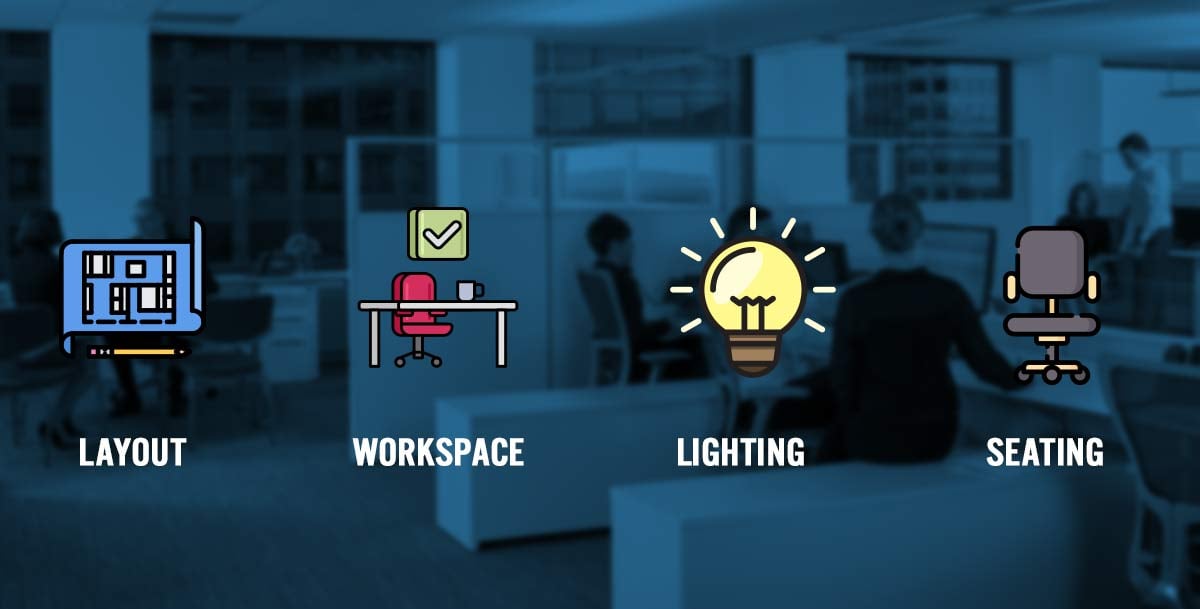
Effective office design — it’s what our industry is built around and what we strive for every day to help our clients with. So how do you design an effective office? There’s no concrete formula nor one size fits all design scheme. However, there are key attributes that every successful office has in order to make it function effectively: smart layout, ideal workplace size, good lighting, and ergonomic seating. Planning your next office with these four features in mind will help you create a more productive environment.
1. Smart Layout - An effective office design begins with a strategic floor plan that smartly accommodates the day-to-day functions of the office. While it may seem obvious, situating departments and clustering certain job functions near each other, shouldn’t be overlooked. Grouping marketing near sales may aid in a quicker, more efficient workflow. Arranging administrative assistants’ desks outside executive offices can streamline the communication process, allowing for impromptu face-to-face interactions. Understanding how teams work and how reliable they are on one another, will dictate your seating arrangement. Starting with a smart layout is smart for business.
2. Workspace Size - What is the ideal size for a cubicle? Years ago, the standard was 8 foot by 8 foot. In fact, companies were focused on maximizing the square footage of their space by cramming in as many cubicles that could fit. Today, we’re experiencing a shift, with the focus being on quality; not quantity. Many companies are opting for a smaller cubicle footprint, utilizing the extra space for shared, collaborative amenities. For example, when we helped Los Angeles World Airports’ (LAWA), design their new LAX offices, we rethought the 8 foot by 8 foot standard beige cubicle configuration. We specified 6 foot by 6 foot cubicles with half partition walls, and outfitted them with attractive, white work surfaces. The result: a lighter-feeling area that felt more spacious and delivered a more positive work experience with the smaller footprint paving way for common areas and huddle rooms. Remember, when configuring your office, take into consideration both individual and shared areas
3. Lighting - Lighting is a key factor in office design. Poorly lit spaces can negatively impact morale and have an adverse effect on work output. In recent years, natural lighting has been a driving force in office design with companies such as Google and Sonos supplementing natural systems with natural-looking lighting. Bright LED overheads are replacing fluorescents to create a more natural-feeling environment. In addition, workstations boast task light and monitor lights, in a range of temperature colors, to meet individual work needs. Shed light on your work design and incorporate a strategic lighting plan in your office design.
4. Ergonomic Seating - We sit a lot. We spend hours a day at our computers —whether on a mobile device or at a desktop computer — for many of us, sitting is a way of working. To create a healthy, comfortable working environment, source durable, high-qualify furniture. Investing in ergonomic office chairs can increase worker productivity, alleviating backaches associated with sitting in front of a computer all day. Ergonomic task chairs coupled with moveable monitor arms will help your office run effectively.
Related E-Book Download: Optimize Your Office Space
Designing an office effectively has its challenges. But with these four key attributes guiding your approach, you’ll be able to create a space that delivers. For more information on effective office design or to learn how we’ve helped create optimal-performing offices, call us today.
For more information about our optimized office services and products, contact us here:





